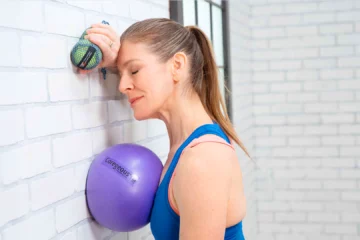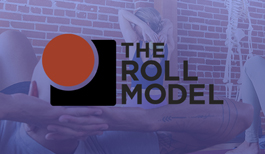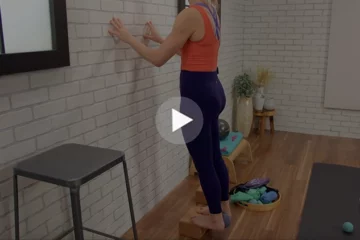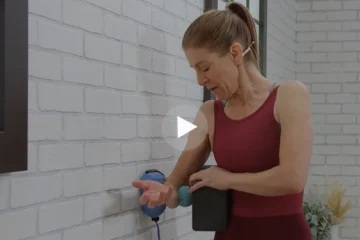
Similar to a massage or taking aspirin, moderate therapy ball rolling induces similar relaxing effects. And a great compliment to a regular Yoga Tune Up® Therapy Ball rolling practice includes strength and stability. I’ve modified my lifestyle and environment with small consistent changes over the past couple years and am enjoying the measure of increased movement I experience.
But at over 30 weeks pregnancy, I need strength more than ever! In my first Trimester, I did an exercise that was “not for me” during a group Mat class. Rather than abstaining (or modifying), I just followed along with the rest of the class. Mistake. The first dull pain I felt from that exercise progressed into sharp shooting pain down my leg. It took six weeks, therapy ball rolling, abstaining from my beloved swing dancing, sessions with my physical therapist, and corrective exercises to resolve the pain. (https://bestsellerpublishing.org/)
While this might not be your story, what health challenges are you facing that could benefit from a little posterior muscle activation? Perhaps getting up and down from the floor (or a chair) with greater ease?
Well… let’s drop it like a squat!
To find your squat and drop it:
- Position your feet at hip width distance.
- Relax your shoulders and toes.
- Keep your spine neutral.
- Hold onto a fixed support (handle/pole, etc.) as needed.
- Contract your glutes.
- Pause at your “edge,” and hang out!
While executing this move, we flex the hip with the help of the rectus femoris (part of the quadriceps femoris group) and activate the gluteal muscles (gluteus maximus, medius, and minimus). The gluteal muscles also help to flex the hip and, along with the hamstrings, quads, and calves, provide support during our squat descent. Additionally, a host of other muscles are activated in any move that we execute. For example, to keep our spine in a neutrally upright position, the erector spinae group (which runs from the sacrum to the occiput along the vertebral column) works to extend the vertebral column.
This is a light overview of muscles recruited during our squat, and it’s good to keep in mind that our bodies are a reflection of the food, movement, psychology, history and trauma we may have experienced in our lives.
Practice this stability boosting move and reflect on how it feels on your body and how many of the alignment points above you can maintain while moving through each pose. To new beginnings and to your health!












I really like how the author lists a how to drop-it for the reader to follow along the exercise and gives a clear step by step. Also, I appreciate the light overview of the muscles that are recruited in the squat so that we have a better grasp of the mechanics of our body in this particular movement. Lastly, I love, love, love that she remind the reader that every body is unique, and ”reflect the food, movement, psychology, history and trauma we may have experienced in our lives”.
Yikes, lesson I learned, just because it feels alright now doesn’t mean it will feel good later, point made and taken. I never really thought about stability balls being great way to gain stability, I guess the name couldn’t have told me that…huh. Thanks for sharing and now I’ll look into getting one. I want to stay stable until walking isn’t an option.
The thought of your pain after a mat class hurts my heart! The idea that your body was in such pain and for so long is heartbreaking. I’m so very glad you were able to find the relief you needed. These squat details are so important. Engaging the glues with squatting is often times missed and instead dumped into the quads. Such a wonderful reminder. Thank you!
I’m becoming more and more interested in pregnancy related exercises and self care as my husband and I prepare for a family in the near future. Thanks for the tips!
Thanks for the “pop it like a squat” humor laced in with the anatomy and helpful postural info.
Thank you for the clear and easy-to-follow tutorial on good squat mechanics! I didn’t realize until recently that Relaxin, the ligament relaxing hormone, is highest during the 1st trimester of pregnancy. I’ve been keeping this in mind as I work with several of my students who are or recently have been pregnant and squats have been on the menu during most of our sessions. Strength and stability are the name of the game, especially during pregnancy, and it’s awesome to hear this message reinforced instead of the constant “stretch, stretch, stretch!”
Thank you for sharing your story Christina! My wife is currently pregnant with our 2nd child and is under the impression she can’t workout at all (which drives her crazy). I’ll be sure to share this video with her! Thank you!
The video is a helpful visual. ‘Drop it like a squat’–hahah!!
I appreciate how you ask us to reflect on how the sequence feels in the body. And also how you address briefly that the body is a reflection of the food, psychology, movement, traumas, etc. I’d love to read more of your writing about this.
Love it! Thank you for sharing this stability move, will be practicing soon even though I’m not pregnant 🙂 Do you recommend holding the pose if you’re looking to build more strength or if balance isn’t an issue?
Thank you for “drop it like a squat” and the rest of this article, Christina! I used to dread them but I’ve recently developed a real fondness for the squats prescribed by my personal trainer. I think what changed my attitude was his cue to keep my weight in my heels, which would have the same effect as your advice (don’t lean too forward or back). Hope Week 31 is awesome!
Squatting activates the downward Apana current which should ideally be avoided in the early stages of pregnancy.